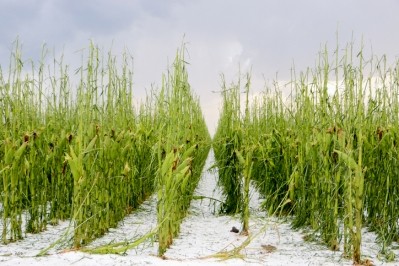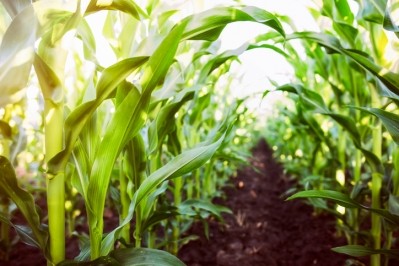WASDE: US corn use and soy yields drops, wheat acres fall

The partial governmental shutdown, which closed several departments including the USDA, meant that the agency did not publish the January report. There was little of surprise in this WASDE report.
Todd Hubbs, clinical assistant professor of agricultural commodity markets at the University of Illinois, weighed in on it for us:
“We can get a feel for how the marketing year is progressing and get some final numbers. For corn, in particular, we get an idea of the feed and residual number so we can think about where we stand for this marketing year.
“We get an idea particularly for price what the ending stocks to use is looking like.”
Overall, both US corn and soybeans saw a decline in per acre yield for the 2018/19 marketing year, said the USDA. US corn and wheat use dropped, and US soybean exports fell 25m bushels.
Information on feed crop production is not expected to generate much change in price, Hubbs said. “After these reports, it’s sort of just flat prices for pretty much everything, I don’t see a lot of movement – corn lost a little over $0.02 cents today.”
“We’re waiting for a piece of news that could change the market, but week after week it’s just the same thing over again and this report didn’t alleviate any of that,” he said. “If you’re looking at feed, based on what you can source, we’ve seen ethanol production slow so the amount of distillers grains out there may be less readily available … but basically [it is] flat prices for a while.”
“Until we figure out how many acres we’re going to plant at the end of March, and then we’ll go from there,” he added.
Corn
The outlook for US corn anticipates a decrease in import, production, stocks and feed use, the USDA said. Production was lowered 206m bushels to 14.4bn based on a decline in yield per acre.
Total use fell about 165m bushels. However, supplies dropped more than use so stocks were reduced by 46m bushels although the season average corn price received by producers was not changed.
“It was a bigger yield drop than what most people thought,” said Hubbs. “That’s 2.5-bushel drop, but the use numbers took the joy out of it – and world production came in high.”
Although feed crop producers working on a set crop rotation system likely will continue to plant corn, there is little incentive, at this time, to increase the acres planted, he said. But “if there’s a trade deal, I think China could come back on corn and ethanol, which would help margins,” he added.
Globally, corn production is anticipated to increase based on production in Argentina, China and the Ukraine offsetting declines from South Africa and Mexico, the USDA said.
Argentina and Ukraine also are expected to see an increase in corn exports in 2018/19, the department said. Imports are predicted to grow for South Africa and Chile but fall for Venezuela.
Soy impressions
Oilseed production in the US dropped to 134m tons, based on reductions in soybean, canola, peanut and cottonseed, the USDA said. Soybean production fell 56m bushels to about 4.54bn and saw a slight loss of harvested acres.
Yield was reduced to 51.6 bushels an acre, led by North Dakota, Nebraska and South Dakota, the department said. However, smaller supplies and an increase in soy crushed were offset by a 25m bushel fall in exports.
The drop in yield was not a surprise, said Hubbs. “Most people thought it was coming down,” he added.
The drop in exports related to ongoing trade challenges, he said.
Ending stocks were reduced to 910m bushels, the USDA said. The season average price forecast for soybeans remained $8.10 to $9.10, while the soybean meal price range of $295 to $335 a short ton increased $5 at the midpoint.
Globally, production, exports, crush and stocks are all anticipated to fall in 2018/19, the department said. Production was lowered 8.2m tons based on crops in Brazil, Argentina, Paraguay, Uruguay and South Africa.
Soybean exports were reduced 1.7m tons with reductions from Brazil, Uruguay and Paraguay only partially offset by Argentina, the department said. Imports were down based on China.
Ending stocks for 2018/19 were reduced 8.6m tons, based on crop changes and balance sheet revisions, the department said.
Wheat and sorghum
Anticipated ending stocks for 2018/19 were increased 36m bushels to 1.01bn bushels based on a drop in feed, seed and residual use, the USDA said. However, the world ending stocks were dropped 0.6m tons to 267.5m
Feed and residual use accounted for 30m bushels, the department said. The drop in seed use stemmed from a reduction in acres planted.
Not all the winter wheat acres expected were planted, said Hubbs. Total planting dropped about 1.2m acres from last year based on production in several states including Kansas and Oklahoma.
Producers in those areas faced challenges getting crops out of the field during harvest and had cold and wet conditions during the winter wheat planting period, he said. “They had a rough harvest window,” he added.
The drop in acres planted may have implications for the planting of corn or soybeans in the spring, he said.
Without improvement in trade tension between the US and China, the extra acres could be planted in corn, he said. However, some of the acreage also could go to spring wheat or cotton.












